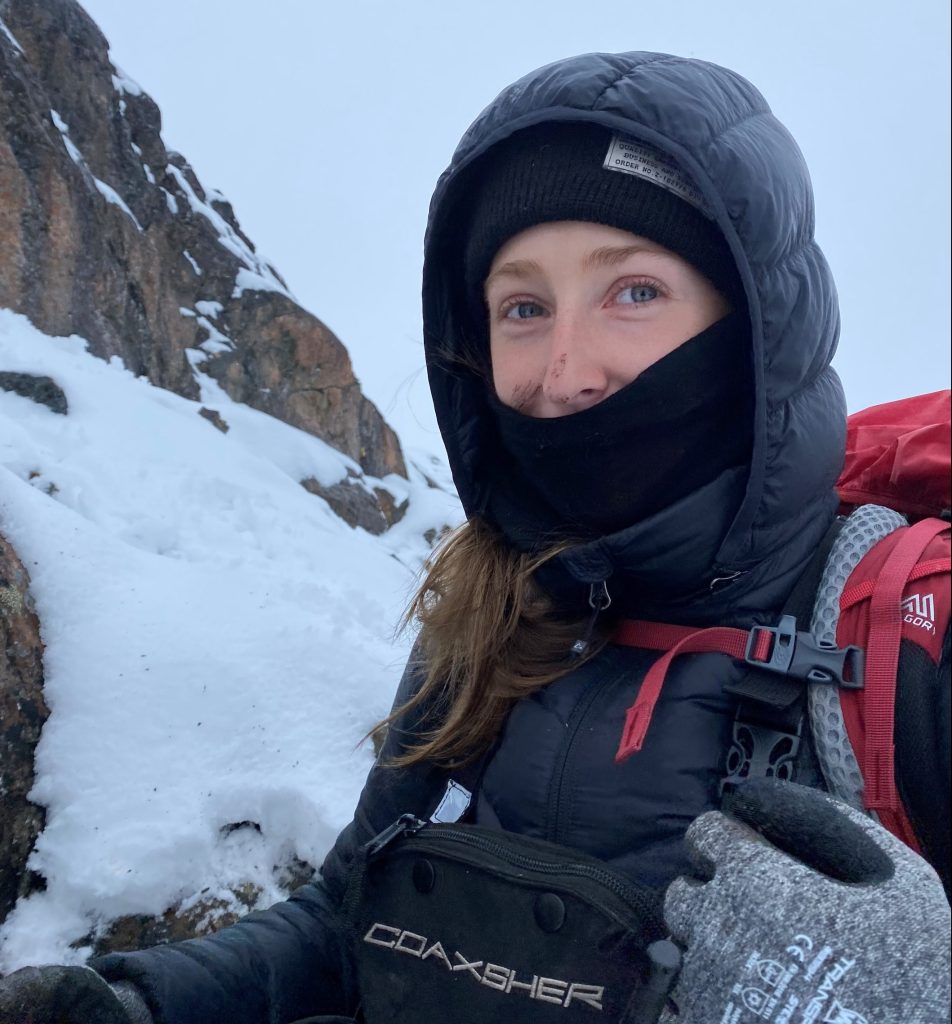Biography:
Alex finished her B.Sc. at Mount Royal University in 2021, where she completed an Honours Research project under Dr. Meg Stewart. Alex was kindly taken on by Dr. Stewart and Dr. Jacob Hanley as an M.Sc. candidate at Saint Mary’s University in January 2022. Her research focuses on identifying the structural and lithologic controls on gold mineralization in the Blueberry Zone of the Scottie Gold deposit located in the Golden Triangle, the area north of Stewart in BC’s Northwest Region known for its gold deposits. Before starting her M.Sc. in Halifax, Alex spent the summer 2021 field season relogging core and mapping for her M.Sc. research project and working for Serac Exploration Limited as an Exploration Geologist in the Golden Triangle, as well as in Beatty, Nevada.
Project: Gold Mineralization in the Blueberry Zone of the Scottie Gold Mine Project, NW Stikine Terrane, BC
The ‘Golden Triangle’ is a prolific mineral deposit in northwest BC that hosts copper-gold porphyry deposits, epithermal polymetallic deposits and volcanogenic massive sulphide (VMS) base and precious metal deposits. The focus of this study is to understand when and how magmatic-hydrothermal mineralizing systems operate in accretionary arc systems by researching the Scottie Gold deposit located in the Stewart-Iskut mineral belt of the Stikine terrane. The Blueberry Zone is one of three main zones in the Scottie Gold deposit with a north-south mineralization trend that juxtaposes the remaining two zones that trend approximately east-west despite their close proximity. The goal of this thesis project is to produce an ore deposit model for the epithermal-porphyry gold deposit in northwest BC by combining detailed field mapping with laboratory work to understand the controls on gold mineralization for the area. The methodologies used in this study include relogging 2020 drill core and surface mapping of the Blueberry Zone. Additionally, core sampling and sampling in the map area have allowed for the continuation of the study through microanalytical work using petrographic thin sections and their offcuts. The microanalytical techniques used to understand general petrography and paragenesis are transmissive and reflective light microscopy, scanning electron microscopy (SEM), and micro-X-ray fluorescence (micro-XRF) work. The results of this study may have implications for future exploration in the Golden Triangle.
